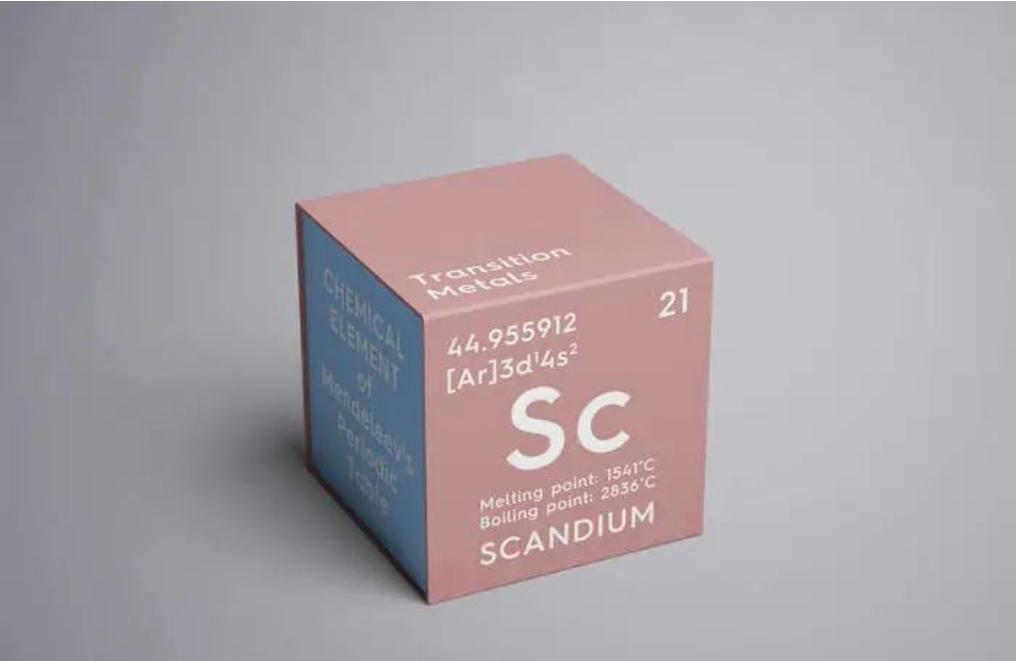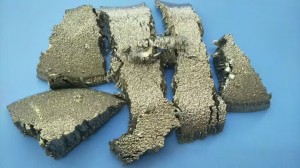Rare Earth Elements | Scandium (Sc)
 In 1879, Swedish chemistry professors L.F. Nilson (1840-1899) and P.T. Cleve (1840-1905) found a new element in the rare minerals gadolinite and black rare gold ore at about the same time. They named this element “Scandium“, which was the “boron like” element predicted by Mendeleev. Their discovery once again proves the correctness of the periodic law of elements and Mendeleev’s foresight.
In 1879, Swedish chemistry professors L.F. Nilson (1840-1899) and P.T. Cleve (1840-1905) found a new element in the rare minerals gadolinite and black rare gold ore at about the same time. They named this element “Scandium“, which was the “boron like” element predicted by Mendeleev. Their discovery once again proves the correctness of the periodic law of elements and Mendeleev’s foresight.
Compared with the lanthanide elements, scandium has a very small ionic radius and the alkalinity of hydroxide is also very weak. Therefore, when scandium and rare earth elements are mixed together, they are treated with ammonia (or extremely dilute alkali), and scandium will precipitate first. Therefore, it can be easily separated from rare earth elements by the “graded precipitation” method. The other method is to use the polar decomposition of nitrate for separation, because scandium nitrate is the easiest to decompose, so as to achieve the purpose of separation.
Scandium metal can be obtained by electrolysis. During the refining of scandium, ScCl3, KCl, and LiCl are co melted, and the molten zinc is used as the cathode for electrolysis to precipitate scandium on the zinc electrode. Then, the zinc is evaporated to obtain scandium metal. In addition, it is easy to recover scandium when processing ore to produce uranium, thorium, and lanthanide elements. The comprehensive recovery of accompanying scandium from tungsten and tin mines is also an important source of scandium. Scandium is mainly in a trivalent state in compounds and is easily oxidized to Sc2O3 in air, losing its metallic luster and turning into a dark gray. Scandium can react with hot water to release hydrogen and is easily soluble in acids, making it a strong reducing agent. The oxides and hydroxides of scandium only show alkalinity, but their salt ash can hardly be hydrolyzed. The chloride of scandium is a white crystal that is easily soluble in water and can deliquescence in air. Its main applications are as follows.
(1) In the metallurgical industry, scandium is often used to manufacture alloys (additives for alloys) to improve their strength, hardness, heat resistance, and performance. For example, adding a small amount of scandium to molten iron can significantly improve the properties of cast iron, while adding a small amount of scandium to aluminum can improve its strength and heat resistance.
(2) In the electronic industry, scandium can be used as various semiconductor devices, such as the application of scandium sulfite in semiconductors, which has attracted attention both domestically and internationally. Ferrites containing scandium also have promising applications in computer magnetic cores.
(3) In the chemical industry, scandium compounds are used as efficient catalysts for alcohol dehydrogenation and dehydration in the production of ethylene and the production of chlorine from waste hydrochloric acid.
(4) In the glass industry, special glass containing scandium can be manufactured.
(5) In the electric light source industry, scandium sodium lamps made from scandium and sodium have the advantages of high efficiency and positive light color.
Scandium exists in the form of 15Sc in nature, and there are also 9 radioactive isotopes of scandium, namely 40-44Sc and 16-49Sc. Among them, 46Sc has been used as a tracer in chemical, metallurgical, and oceanographic fields. In medicine, there are also studies abroad using 46Sc to treat cancer.
